SUBCORYMBOSA Kimnach & Moran, 1994
Synonym : Echeveria andreae Reyes-Santiago & Cruz-Lopez (2022) - see Note below
Series Racemosae
Type : A. Lau 030. Mexico : Oaxaca : Laguna Encantada, ca 2 km N of Santiago Juxtlahuaca, May 1974.
Etymology : Referring to the inflorescence.
Distribution : Mexico (Oaxaca : Sierra Mixteca Alta mountain region, Puebla)
First Description by Kimnach & Moran in Cactus and Succulent Journal US, 66(1): 11-15. 1994 :
Plant entirely glabrous.
Stems ca 3 (-5) cm long or more, 5 - 8 mm thick, the epidermis brown.
Rosettes 4 - 6 (-30), flattish or slightly concave above because of ascending or upcurving leaves, (3-) 4 - 6 cm wide, compact, with 20 - 35 leaves.
Leaves obovate-spathulate, cuspidate, with subobtuse, red cusp 1 mm long or less, 1.5 - 3 cm long, 8 - 25 mm wide ca 8 mm from leaf-apex, ca 6 mm wide at base, 5 - 7 mm thick ca 1 cm from apex, ca 4 mm thick near base, plane of upper surface sharply or gradually deflexed within 3 mm of apex, apical half of both surfaces obtusely keeled, dull or slightly shiny, glaucous-bluish-grey, the lower surface densely red-flecked (less so in Lau 026), the margins obtuse or slightly rounded and usually reddish.
Floral stems 4.5 - 8 (-11) cm long, ca 2 - 4 mm thick near base, 3 mm thick near apex, glaucous-pink or -red, the leaves 6 - 12, ascending, elliptic-obovate, acute, attached subventrally, bluntly spurred, 8 - 15 mm long, 4 - 7 mm wide, 2 - 5 mm thick, bluish white often tinged pinkish.
Inflorescence a raceme of 3 - 12 flowers, at first corymbose because of the long lower pedicels, the rachis 10 - 15 mm long, pedicels at first nearly horizontal, later nearly erect, 1 - 3 cm long, the lowest the longest, 1.5 mm thick at base, 2 mm thick above, each with 1 - 3 bracts along basal half, these linear-elliptical, acute, prominently spurred, 2 - 14 mm long, 1 - 3 mm wide, 0.5 - 2 mm thick.
Flowers : Calyx disc 4 - 5 mm wide, the sepals ascending, with tips ca 1 - 2.5 mm from corolla, unequal, ovate to triangular-lanceolate, acute, (2.5-) 5 - 11 mm long, (1.5-) 2 - 3 mm wide, 1 - 1.5 mm thick, reddened at apex, corolla ovoid, pentagonal with sides flattish or slightly channeled, 8 - 14 mm long, 6 - 8 mm thick, the opening 3 - 4 mm wide, petals with abruptly expanded apices, oblong, subotuse, 3.5 mm wide, often with a blunt subdorsal mucro less than 0.5 mm long, obtusely keeled dorsally, basal half or two-thirds of dorsal side reddish orange, the apical third or half yellow, ventral side yellow, rather flat except for a narrow channel and a roundish nectar pit ca 1.5 mm wide, connate for ca 1 mm.
Cytology : n = 29
Note :
1. Since its discovery, the type (Lau 030) has been recollected several times, also near Coxcatlan in Puebla. Not surprisingly the plants are somewhat variable especially concerning the length of the corolla.
2. The structure of the inflorescence of the two forms of E. subcorymbosa is identical.
3. Echeveria andreae :
In 2022 Reyes-Santiago and Cruz-Lopez published E. andreae as “ new species endemic to the Mixteca Alta mountain region in the state of Oaxaca”. They indicated that its inflorescence is identical with that of E. subcorymbosa.
As the above description evidences, E. subcorymbosa Kimnach & Moran comprises two forms: An almost stemless form with short and narrow leaves, type locality Laguna Encantada (Lau 030) and a somewhat caulescent form with larger and rounder leaves, type locality Tlacotepec (Lau 026).
What Reyes-Santiago and Cruz-Lopez found at San Esteban Atatlahuca and consider a “new species” is almost identical with the latter (Lau 026), also from the Sierra Mixteca Alta mountains, distant from the type locality only some 60 km as the crow flies, and their description is in fact a re-description of the latter. The minor differences between the hitherto known plants and the newly found plants indicate that not only Lau 030 but also Lau 026 is somewhat variable.
Obviously the two authors failed to correctly understand the description by Kimnach and Moran in CSJA 66(1): 11-15, 1994, clearly covering both forms. But more important is their lack of knowledge and familiarity with existing and already described plants , i.e. they evidently did not know Lau 026. This is the only way to explain why they described and named a plant which had been described and named already almost 30 years ago - instead of reporting a new locality for this long known plant.
In short : The publication of the plant found at San Esteban Atatlahuca as a "new species" is of course completely superfluous.
4. In his treatment of genus Echeveria in the Crassulaceae vol. of the Illustrated Handbook of Succulent Plants, 2003, Kimnach wrote : “The population from Tlacotepec …. may be deserving of varietal status", however he - though himself most familiar with these plants - obviously refrained from classifying the Lau 026 form as a variety.
E. subcorymbosa Lau 030 in habitat near Laguna Encantada, Oaxaca, Mexico :
E. subcorymbosa Lau 030 dans l'habitat, près de la Laguna Encantada, Oaxaca, Mexique :
E. subcorymbosa in habitat Juxtlahuaca :
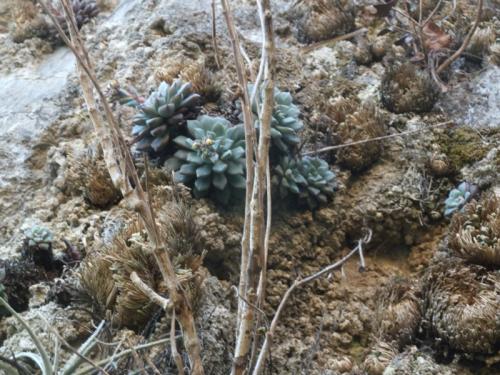
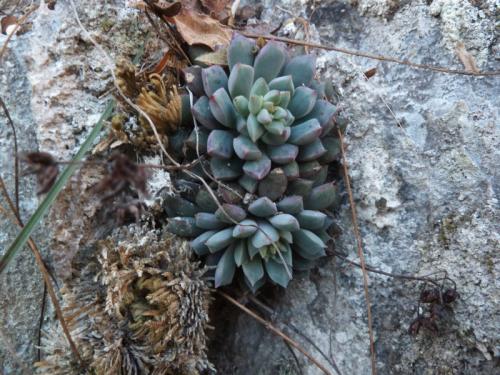
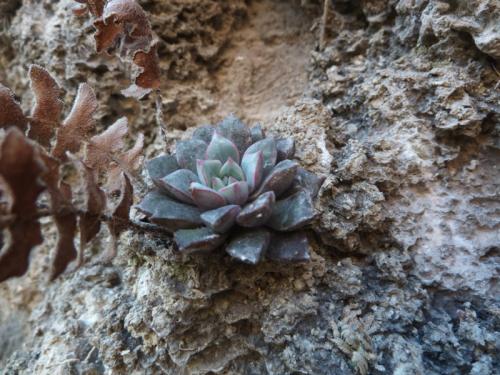
Photos Gerhard Köhres
The same plant in cultivation :
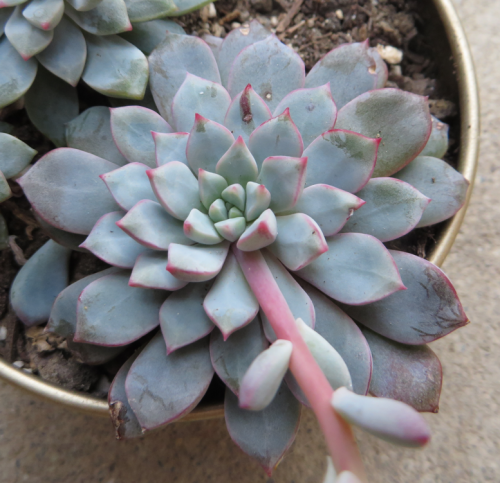
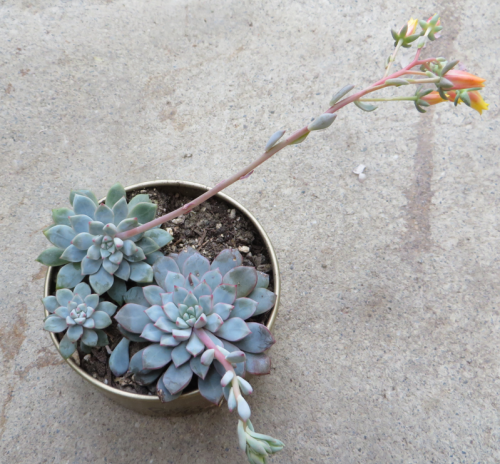
Photos Margrit Bischofberger
A different clone from Coxcatlan, Puebla :
.jpg)
.jpg)
.jpg)
Photos Gerhard Köhres
E. subcorymbosa Lau 030 in cultivation :
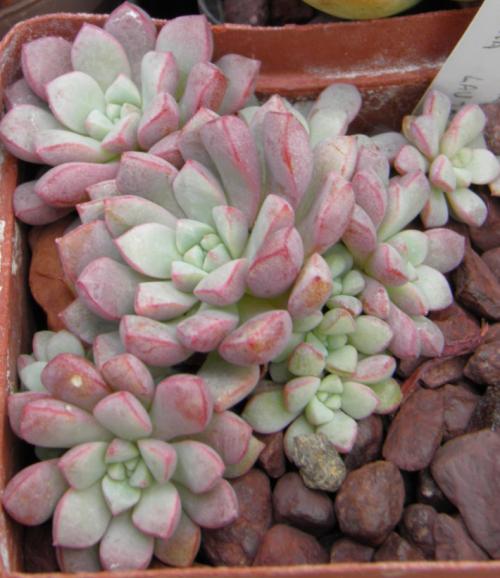
.jpg)
Photos Christophe Camassel
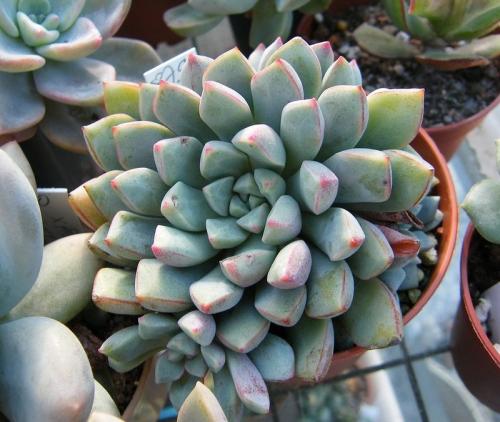
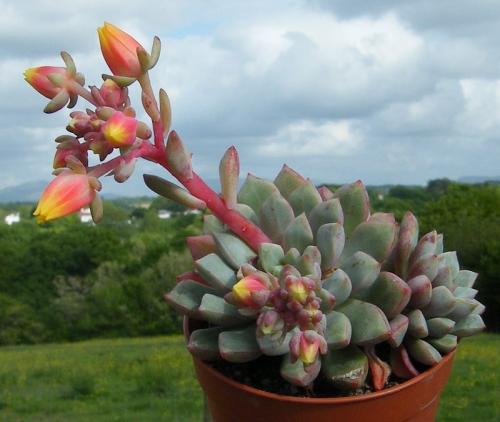
E. subcorymbosa Lau 026 :
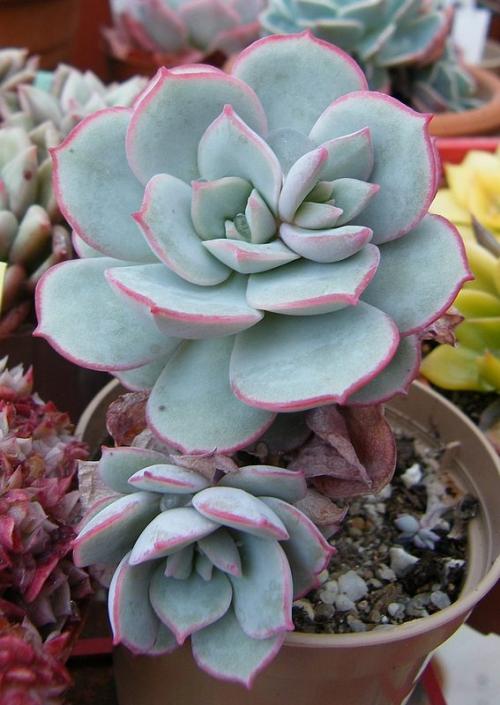
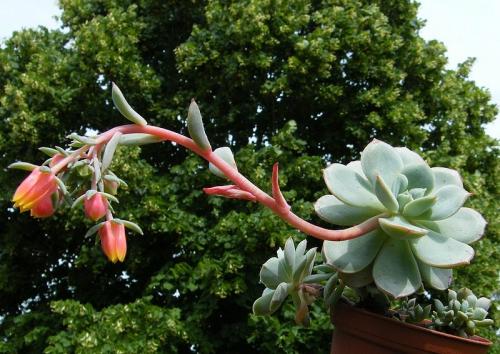
.jpg)
Photo Stefan Neuwirth